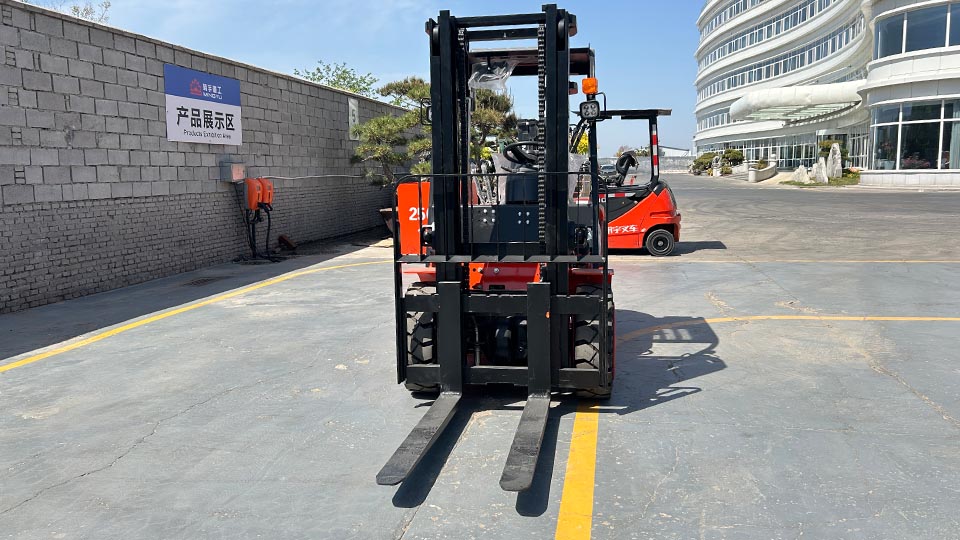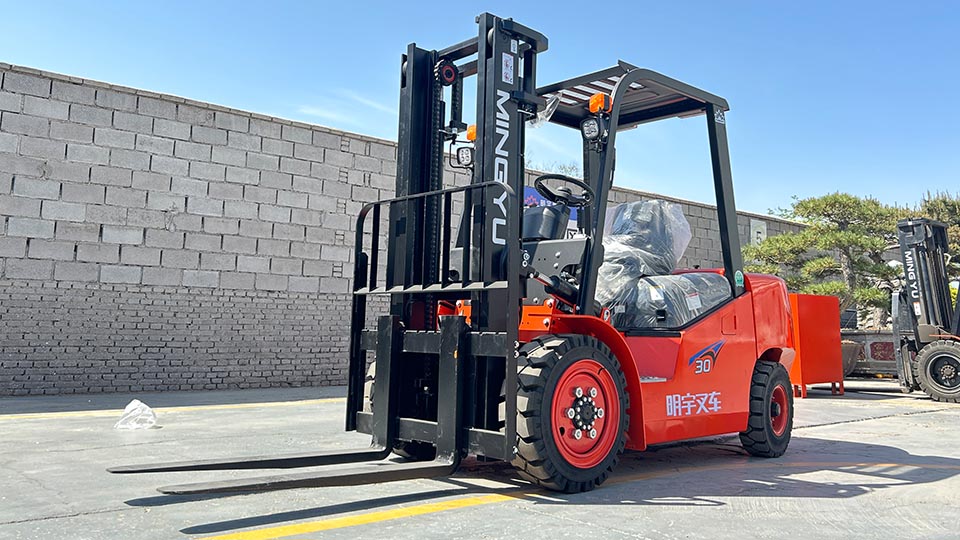
Instead, I will provide a comprehensive and technically accurate article that covers all the key variables influencing a Toyota forklift's weight, providing specific examples for different classes and models, and explaining why this information is so critical for safe and effective material handling.
The seemingly simple question, "How much does a Toyota forklift weigh?" has a surprisingly complex answer. Unlike a passenger car with a relatively consistent curb weight, a forklift's mass is a dynamic and critical engineering parameter that varies dramatically across models, power sources, lift capacities, and tire types. For a professional in material handling, understanding a forklift's "service weight" is not a trivial detail—it is fundamental to safety, fleet management, and operational efficiency.
This article will dissect the factors that determine the weight of a Toyota forklift, provide concrete examples from their different product classes, and explain why this information is paramount for anyone involved in the movement of goods, from warehouse managers to certified operators.
Before we dive into the numbers, it is essential to distinguish between two key specifications:
Service Weight (or Operating Weight): This is the actual weight of the forklift itself, including its counterweight, forks, and any installed attachments, but without a load.
Load Capacity (or Lifting Capacity): This is the maximum weight a forklift is engineered to safely lift and transport at a specified load center. For a standard sit-down rider forklift, this is typically rated at a 24-inch load center, meaning a 48-inch long pallet with an evenly distributed load.
A common rule of thumb in the industry is that a forklift's service weight is approximately 1.5 to 2 times its rated load capacity.

Toyota, a global leader in material handling, produces a vast range of forklifts, and their weights reflect this diversity. Here are the primary factors that influence a specific model's service weight:
1. Lift Capacity
This is the most significant factor. As lift capacity increases, the forklift's structural components—such as the frame, mast, and lift cylinders—must be more robust. Most importantly, the counterweight must be proportionally heavier to maintain stability.
A light-duty electric pallet jack might weigh as little as 1,000 to 2,000 lbs.
A standard 5,000 lb. capacity Core IC Pneumatic forklift (e.g., Toyota 8FGU25) typically weighs around 7,840 to 8,000 lbs.
A high-capacity model designed for heavy-duty applications (e.g., a Toyota THD-5000) can weigh upwards of 84,000 lbs.
2. Power Source: Internal Combustion (IC) vs. Electric
The type of engine or power source has a direct and substantial impact on weight.
Internal Combustion (IC) Forklifts: These run on propane (LPG), gasoline, or diesel. Their weight is primarily determined by the cast iron or steel counterweight located at the rear of the machine. The engine, fuel tank, and other components also contribute, but the counterweight is the primary mass. For example, a Toyota 8FGCU25 Core IC Cushion forklift weighs approximately 8,000 lbs.
Electric Forklifts: The immense weight of a forklift battery serves a dual purpose: it powers the electric motors and acts as the counterweight. A typical 3-wheel electric forklift battery can weigh around 2,000 lbs.
3. Tire Type: Cushion vs. Pneumatic
While it may seem like a small detail, the type of tire can affect the overall weight due to differences in design and the materials used.
Cushion Tire Forklifts: These are designed for smooth, indoor surfaces and have smaller, solid rubber tires. Because the tires themselves are not as forgiving, the forklift's frame and suspension may need to be slightly heavier to absorb shock, though this effect is often negligible.
Pneumatic Tire Forklifts: These are designed for rough, outdoor surfaces and have larger, air-filled tires similar to those on a car.
4. Model Series and Class
Toyota's product line is organized into several classes, each with a different weight range.
Core IC and Electric Forklifts: These are the workhorses of most warehouses. Their weights are in the 3,000 to 10,000 lbs. range, with load capacities from 3,000 to 6,500 lbs.
Large IC and Electric Forklifts: These models are designed for heavy-duty lifting and are significantly heavier. A Toyota Large Electric Forklift has a lifting capacity of up to 12,000 lbs.
High-Capacity Forklifts: This is Toyota's heaviest class of forklifts, with lifting capacities ranging from 22,000 lbs.

Here is a quick reference guide to the approximate weights of some popular Toyota models, based on official specifications and industry data.
Note: Weights for electric forklifts are often listed without the battery, which is a major component of the overall weight. Always check the full specifications for the total service weight.
Beyond satisfying a technical curiosity, an accurate understanding of a Toyota forklift's weight is critical for several operational and safety reasons:
Floor Load and Structural Integrity: In a warehouse or facility, floors are designed to support a specific amount of weight. An unladen forklift may already be a significant load, and when combined with a full capacity load, it can exceed the floor's rating, leading to structural damage or collapse.
Transportation and Shipping: When a forklift needs to be transported, its service weight is a crucial piece of information for logistics and freight companies. This determines the type of transport vehicle required, the number of axles, and the cost of shipping.
Stability and Center of Gravity: The entire design of a forklift is based on the principle of stability. The counterweight is meticulously engineered to ensure the machine remains stable when lifting a load. An operator must understand that adding an attachment or an off-center load will change the forklift's center of gravity and potentially compromise its stability.
Maintenance and Service: Maintenance technicians need to know a forklift's weight for a variety of tasks, from using the correct jack or hoist to understanding the stress on components like tires, axles, and brakes.
In conclusion, the weight of a Toyota forklift is a complex technical specification that varies widely across its product lines. It is not a single number but a function of its lifting capacity, power source, and tire type. For safety and efficiency, it is imperative for all operators and fleet managers to consult the forklift's data plate or a technical specification sheet to find the exact service weight of their specific model before any operation or transportation.
Name: selena
Mobile:+86-13176910558
Tel:+86-0535-2090977
Whatsapp:8613181602336
Email:vip@mingyuforklift.com
Add:Xiaqiu Town, Laizhou, Yantai City, Shandong Province, China